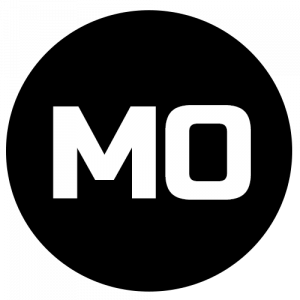7 Trends Transforming Today's Office Design: A Comprehensive Guide
Published byOffice design is an ever-evolving field that reflects changes in work culture, technological advancements, and the ongoing quest for improved productivity and well-being in the workplace. This article delves into the latest trends in office design, offering insights and practical tips for those seeking to create an environment that not only fosters efficiency but also enhances the quality of life for its occupants.
The Evolution of Workplace Design: Merging Function with Well-Being
Embracing Flexibility and Mobility
The traditional office setup, with its rigid structures and fixed workstations, is giving way to more flexible and mobile designs. This trend is driven by the increasing adoption of remote and hybrid work models, which demand spaces that can adapt to diverse working styles and needs. Offices are now incorporating movable furniture, adjustable lighting, and modular spaces that can easily transition from individual work areas to collaborative zones.
Integrating Nature and Sustainability
Biophilic design, which involves incorporating natural elements into the workplace, is more than just an aesthetic choice; it's a health and wellness strategy. Natural lighting, indoor plants, and materials that mimic natural textures not only create a visually appealing space but also contribute to reduced stress levels and improved mental health. Moreover, sustainable practices in office design, such as using eco-friendly materials and energy-efficient systems, reflect a growing corporate responsibility towards environmental stewardship.
Harnessing Technology for Enhanced Productivity
Smart Office Solutions
The integration of smart technology into office design is revolutionizing how we interact with our workspace. From automated climate control and lighting systems to advanced conferencing technologies, these innovations are making offices more efficient and responsive to the needs of their users.
Ergonomic Design for Health and Comfort
Ergonomics plays a pivotal role in office design, focusing on creating spaces that are physically comfortable and reduce the risk of strain or injury. This includes selecting chairs that support good posture, desks that accommodate different heights and activities, and layouts that encourage movement and reduce sedentary behavior.
Creating Spaces That Foster Collaboration and Privacy
Balancing Open Spaces and Private Nooks
While open-plan offices encourage teamwork and communication, they can sometimes be counterproductive due to noise and distractions. Modern office design addresses this by offering a balance: open areas for collaboration and private nooks or pods for focused work or confidential discussions.
Community Areas and Social Zones
Offices are increasingly featuring communal spaces where employees can relax, socialize, and exchange ideas informally. These areas, equipped with comfortable seating and often amenities like coffee bars or games, help build a sense of community and enhance employee satisfaction and engagement.
Embracing Cultural and Artistic Elements
Reflecting Brand Identity and Values
An office design that resonates with a company's brand identity and values can be a powerful tool for fostering a strong corporate culture. This can involve color schemes that reflect the brand, artworks that communicate the company's ethos, or architectural elements that embody its vision.
Conclusion: The Future of Office Design
The future of office design lies in creating spaces that are adaptable, sustainable, technologically integrated, and human-centric. This approach not only enhances productivity and efficiency but also contributes significantly to the well-being and satisfaction of those who inhabit these spaces.
FAQ: Unveiling the Secrets of Office Design
What is the primary goal of modern office design?
The primary goal is to create a space that balances functionality with the well-being of its users, fostering an environment that enhances productivity, encourages collaboration, and supports the physical and mental health of employees.
How does technology influence current office design trends?
Technology plays a crucial role in modern office design, with smart office solutions enhancing efficiency and ergonomics improving employee comfort and health. The integration of advanced technologies facilitates a more responsive and adaptable workspace.
What is the significance of sustainability in office design?
Sustainability in office design reflects a commitment to environmental responsibility. It involves using eco-friendly materials, energy-efficient systems, and biophilic elements, contributing to a healthier workplace and a reduced ecological footprint.
This comprehensive guide offers a deep dive into the latest trends in office design, providing valuable insights for those looking to create a workspace that is not only efficient but also conducive to the well-being and productivity of its users.







